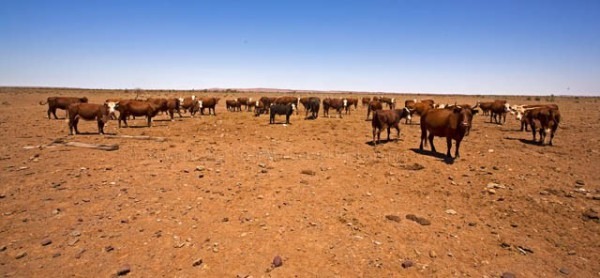When one thinks of a country with everything going for it, in terms of a sustainable future and high quality-of-life, Australia springs to mind. Vast land area, clean seas, a tiny population by world standards (under 3 people per km2, the lowest of any sizeable country, c.f., 53 people per km2 world average) and a highly educated and wealthy population. Also since we cram our population into big cities (over 50 %, one of the most urbanised countries on Earth) a traveller to Australia sees vast empty spaces and would find them pristine.
You would be surprised then to know that Australia leads the way in many areas of environmental degradation, and has serious problems of depletion of resources in other areas. First, people in Australia have denuded forests to an alarming extent. Today, about 40% of the continent has been severely modified by intensive land use, with agricultural areas dominated by cattle grazing zones covering around 43% of the country and ‘improved’ pastures covering around 10%. 40% of its forests have been cleared since European settlement with a significant proportion of what remains fragmented and weed-infested.
Australian farming is mostly an antipodean offshoot of European practices, but in a harsh waterless environment with soils lacking essential nutrients. Cattle and sheep destroy the desert vegetation and are stocked at such low rates as to be highly unprofitable (hence huge farm subsidies). And the massive water shortage doesn’t stop the strong resistance to recycled drinking water. Water is also wasted for non-sustainable crops and even washing vegetables, with thousands of litres per kilogram required to produce many crops.
Second, our fishing fleets have depleted many key fish stocks, with over 15% overfished or fully-exploited and 35% data-deficient at last count. Freshwater fisheries are especially vulnerable due to large-scale water diversions on major rivers and chemical runoff from crops such as cotton. In addition, Australia’s tropical to temperate location makes it especially vulnerable to loss of productive fishing due to climate change. Australia has some of the most polluted harbour floors on Earth for example, iconic Sydney Harbour is currently closed long-term to commercial fishing due to high dioxin levels.
The Australian economy has always been heavily biased towards primary production, terrestrial agriculture with a strong mining component, based on fossil fuels.
On top of that, Australia has a rather high rate of population growth (1.6% pa c.f. world 1.1%, India 1.2% and China 0.2%, through both local birth and immigration) and many business and political leaders advocate a “big Australia” with encouragements for population growth. They cite the added prosperity and business opportunities that an expanding population would facilitate. Such a market-based point of view is of course deeply flawed, since as above, Australia has proportionally little arable land, low rainfall, and a fragile environment. And as western consumers, Australians have one of the highest per-capita footprints on Earth.
As far as quality of life is concerned, Australia has a relatively low rate of smoking (20%) but indigenous Aboriginal rates are near 50% and Aboriginal health/life expectancy and education are very much below par.
It goes to show that wealth and low population size are no guarantees against environmental degradation. Finger-pointing at crowded third-world nations or higher population Western countries as the only problem is dangerous for Australians; instead we should adopt a mind-set that promotes local actions to make Australia a model for a sustainable world!
MAHB-UTS Blogs are a joint venture between the University of Technology Sydney and the Millennium Alliance for Humanity and the Biosphere. Questions should be directed to joan@mahbonline.org.
MAHB Blog: https://mahb.stanford.edu/blog/underpopulated-overexploited/
The views and opinions expressed through the MAHB Website are those of the contributing authors and do not necessarily reflect an official position of the MAHB. The MAHB aims to share a range of perspectives and welcomes the discussions that they prompt.
